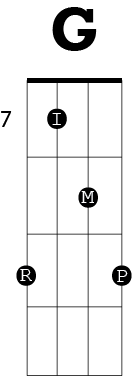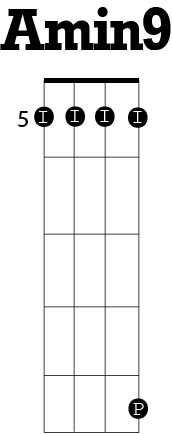Whether you are new to playing the banjo or you are a seasoned player, when learning new chord shapes you more than likely will be challenged making your fingers move from one chord position to another from time to time. This can be frustrating, but take solace in the fact that it is completely normal. It can sometimes feel like you will never be able to change in time with the music, but by being patient and using some of the following tips, you’ll will soon be making chord changes as smooth as silk.
If a finger is used on the same string for both the first chord played and the chord you are moving to, make sure to keep that finger on that string. Even if it is used at a different fret.
If you were playing in G tuning on a 5 string banjo and playing a G chord using the D shape, and then moved to a C chord using the F shape, these two chords are really quite similar. The ring finger and the pinky play the outside strings (1st and 4th strings) on both of these chords. To change to the C chord you simply keep the ring finger and the pinky down and move them up one fret. At this time you switch the strings that the middle and index finger were playing.
 |
 |
Using the above example of switching from a G chord in the D shape to a C chord using the F shape, we figured out that there are really just two fingers that are changing the strings they are playing. Without playing the banjo with your right hand, practice making this change between these two chords back and forth very slowly. Really focus with your mind on what your body is actually doing. Understand and memorize what fingers are moving and how it feels.
Some changes from chord to chord may not have a finger that is used on the same string for both chords. Each chord might seem completely different and something that puts your fingers into a knot, but take a step back. Part of these chords might be something you are already familiar with. Take the example below where I am playing a Gmaj7 and moving to an Amin9 chord. When I go to make the Amin9 chord, I really am just making a C chord that is barred at the 5th fret with my index finger and then I add the 9th which is on the first string at the 9th fret with my pinky.
Going back from the Amin9 chord to the Gmaj7 chord is a harder move, but if I don’t use my pinky on the Gmaj7 chord and just focus on the 1st, 2nd, and 3rd string that is played with my index, middle, and ringer finger, the shape is not that hard. After getting this down, I then simply add my pinky.
 |
 |
Lastly, use a metronome and only go as fast as you can change from chord to chord without missing a beat. Be patient. If you can change cleanly at a slow tempo, you will be able to eventually work your way up a change chords at quicker tempos.
It doesn't matter what style of banjo playing you do, creating a warmup routine for yourself each time you pick up your banjo will help you progress and...
Every banjo player dreams of a signature sound, a style that sets them apart and instantly captivates listeners. It's the difference between mimicking your...
One of the biggest myths about the banjo is that it is hard to play. After generations of blisteringly fast bluegrass licks dominating the public's perception...
"Can you play clawhammer banjo on a resonator banjo?" It's a question that comes up fairly often both on online forums and out in the public. The answer is...
3733 Kenora Dr.
Spring Valley, CA 91977
COMMENTS